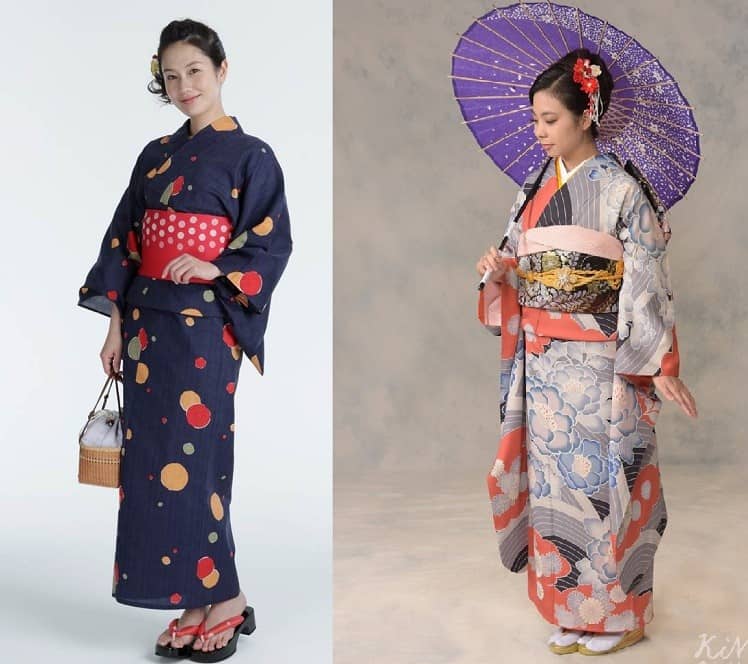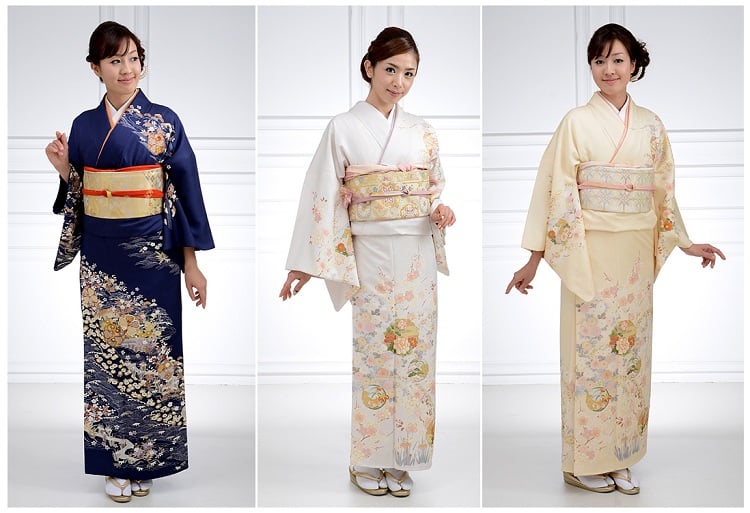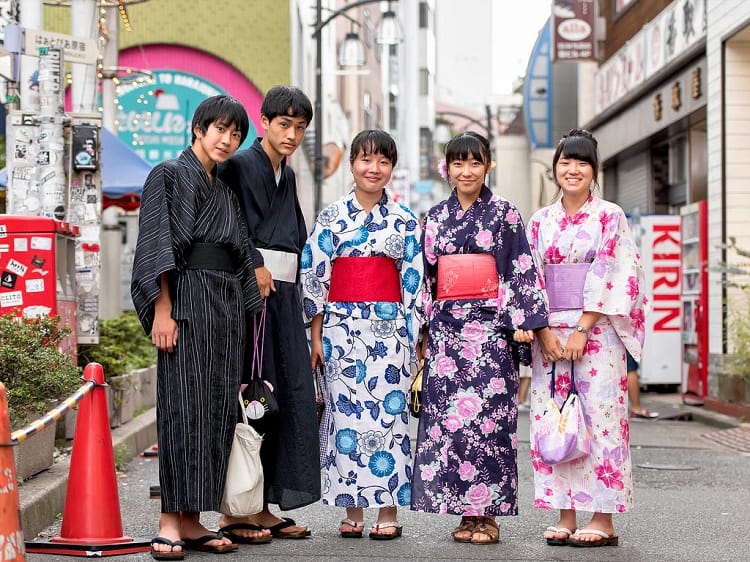Japan
What is the difference between Japanese Kimono and Yukata?
The Kimono and the yukata are native Japanese garments which have become popular everywhere in the world because of their style and beauty. Both robes are T-shaped and full-length long-sleeved and they’re secured with an elegant decorative belt. Both are worn by women and men.
They look similar, but there are subtle differences between a yukata and a kimono that any Japanese culture fashion enthusiasts should take note of. If you are looking at them at just a glance, you might not spot these differences in the pattern and styles of these clothes.

This article will help you spot the differences between these uniquely beautiful Japanese traditional international fashion pieces and guide you as you make a choice of which you should buy.
What is a Kimono?

Kimono is a garment. It is the older, more expensive, and more traditional garment. They are usually made with brocade, or silk, they have an outer and inner layer, and they’re worn with two collars at least. Both women and men wear kimono.
Also, people can wear them all year-round and they have different styles for different seasons. They are lined in spring and autumn, padded during winter, and unlined during summer. There are other different kinds of kimonos depending on which occasion they are worn to and the social status of the wearer.
What is a Yukata?

Yukata is also a garment but it is a more casual and less expensive garment. Typically, they are made from cotton and they’re to be worn in summer. Yukata are worn mostly by women, but in recent times it is increasingly popular among young men to wear them in summer.
Because yukata is informal, people usually experiment it with accessories, patterns, and colors. Also, people wear Yukatas as bathrobes when in places like Hot Springs. The Yukata garment is made of cotton while the kimono garment comes in silk.
The differences between a Kimono and a Yukata
The following are the simple things you can use to easily identify the differences between a Kimono dress and a Yukata dress.
1) Season:
During summer, yukata is mostly worn. They are really casual and worn as bathrobes in places such as hot springs. Kimonos are not usually worn as casual wears.
2) Material:
A yukata is made from cotton, while a kimono is made from silk. Hardly will you ever find a yukata made from silk or a Kimono made from cotton.
3) The robe’s collar:
Kimono comes with at least 2 collars. One is close to your neck, while the second is lower at the front, this makes the other collar to be seen very clearly. Basically, the Juban collar is the one showing under your kimono collar.
A Juban is not worn underneath a Yukata, so there is only one collar. Though some people for fun attach decorative ruffles to yukata collars, but the look is very different from the look of a Kimono having Juban collar underneath it.
4) Footwear:
A kimono is always worn with socks, if you see someone wearing kimono without socks, check again its yukata, not kimono. But at times, some people may wear really fun and cool patterned socks on their yukata, so this might not be the best way to always differentiate.
5) The Occasion:
Yukata and Kimono are suitable and meant for different types of occasions. Generally, yukatas are mostly worn casually in summer, to summer festivals such as firework displays. Because yukata are worn to less formal occasions they mostly have bright colors and patterns whereas kimonos are worn to formal occasions like graduations and weddings.
Although, these two outfits are typically worn for different types of occasions, still, you can wear a yukata or kimono anytime you desire to wear it. You may come across people in Japan wearing their Kimono outfits for casual events.
The proper way to wear a kimono and yukata
Despite the differences in these traditional outfits both yukata and kimono have a particular important rule. You have to always put the left side or panel on top of the right one, never make the mistake of wearing it wrongly because it is seen as an extremely rude behavior because right-over-left is the method used to wear cloth for the dead in Japan.
To avoid making this mistake, remember that every time you wear your garment, your right hand should be able to enter underneath the first or top side or panel of your garment as if you were placing your hand inside a pocket of putting something inside.
Features to consider when choosing to either buy a Kimono or Yukata
If you are thinking about kimono vs yukata, deliberating on which one you should buy for yourself, then it all depends on two major questions: how hot is the weather and where are you wearing it to?
If you are buying it so you can wear it to a wedding or any other formal event, or let’s say the weather is quite cold, then a Kimono is your perfect choice. If the weather is very hot, a yukata is a better choice for you.
Given any other circumstance asides from these, you are free to buy any one your heart clicks with. Don’t concern yourself with a particular time of yukata or kimono, instead find a material, pattern, or color that you really like.
What’s most important is that you wear something you like and feel great and comfortable in.
Conclusion
Both yukata and kimono are extremely different in their look and are usually beautiful and gorgeous pieces of art, this is why they so popular and adored. We hope you now know the differences between the two garments and when choosing one you’ll be able to differentiate conveniently.
Instead of limiting yourself to enjoying the beauty of just one why don’t you purchase both garments and rock them anytime you please. You will definitely enjoy both of them.
